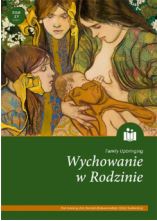Rodzina wielokulturowa w sytuacji konfliktów
i zagrożeń
Multicultural family in situations of conflict and threats
Author(s): Ewa Sowa-BehtaneSubject(s): History, Social Sciences, Education, Sociology, Social history
Published by: Zakład Historii Edukacji w Instytucie Pedagogiki Uniwersytetu Wrocławskiego
Keywords: family; multiculturalism; multicultural family; binational marriage; problems; threats; crisis; cultural diversity
Summary/Abstract: When people from different nations join together to make a couple, very important phenomena and processes occur, whose significance goes beyond the fate of the membersof the couple. As a result of the amalgamation, that is a merger of cultural groups following a marriage and the creation of hybrid forms of kinship, a new cultural order emerges. In mixed marriages a specific situation is created – the ‘meeting’, the binding of culturally distant partners who decide to enter into a marriage and thus to cohabitate, to cooperate for the good of the family, which means mainly raising children and mutual help. The degree of cultural difference determines the number of problems which occur between partners. National, religious, linguistic and cultural differences can affecta marriage both positively and negatively. The result is determined by, among other things, the degree of the similarity of a partner, the degree of language barrier, the acceptanceof a different culture and religion of the partner and his or her distinct views. As with any inter-cultural contact, in mixed couples there must come to a kind ofa compromise – the partners learn about each other’s culture and together they create a mixture that enables them a harmonious coexistence. Under the influence of cultural compromise, which takes place in mixed relationships, partners, adapting to each other,may change their habits, customs, ways of behaviour, opinions, values etc.The following factors may lead to problems in mixed relationships: differences of national cultures, the assumption of similarity of interlocutors, language differences, incorrect interpretation of non-verbal signals, stereotypes and prejudices, different systemsof values, fears and tension, uncertainty and stress, ethnocentrism and conviction of the ‘superiority’ of one’s own culture, culture shock, religious diversity or even cultural models to satisfy hunger. All of these factors should be investigated and describedin the form of academic theses.
Journal: Wychowanie w Rodzinie
- Issue Year: XV/2017
- Issue No: 1
- Page Range: 79-92
- Page Count: 14
- Language: English, Polish

